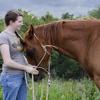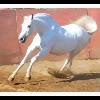Eye color shades
Itz
June 29, 2012 June 29, 2012
Forums
To see the shades of an eye be lighter in some horses and darker in other horses is of course something I've seen before. But at times there are those that stand out a little.
I have literary photos of thousands of horses in my folders taken over the years, and occasionally I manage to catch some interesting ones.
One is a chestnut new forest pony, one is a sooty pally and the third is what looked like a seal brown north swedish draft. The NSD and the pally almost looked even lighter irl, but the shading makes them look as if the eyes were a bit darker.
[img]http://i886.photobucket.com/albums/ac65/PaulineHogdahl/DSC_5052.jpg[/img] [img]http://i886.photobucket.com/albums/ac65/PaulineHogdahl/_DSC3886.jpg[/img]
[img]http://i886.photobucket.com/albums/ac65/PaulineHogdahl/DSC_4008.jpg[/img]
Is there any info avalible about what might cause the shift in the shade of the eye? Or any theories?
Thought I'd share a pic of
Thought I'd share a pic of our Friesian stallion. :) His eyes are extremely light for a Friesian.
[img]https://sphotos-b.xx.fbcdn.net/hphotos-…]
[img]https://sphotos-b.xx.fbcdn.net/hphotos-…]
[img]https://sphotos-a.xx.fbcdn.net/hphotos-…]
It is kinda hard to catch on camera though. lol


I actually did a lot of
I actually did a lot of reading about eye color in humans and I'm sure a lot of it can translate here. Basically eye color is determined by the amount of pigment in the eye. The eye has two layers, basically a front and a back, when boh the front and back hav lots of pigment, eyes are brown, when only pigment is at the back of the eye, eyes appear blue. We still dont produce blue pigment though, the blue color is because light goes through the front of the eye and refracts light, basically the same way the sky does. Green eyes were simply a little amount of pigment in the front so some light could go through to refract. The shade of eyes, at least with the lighter colors, is partially determined by the amount of collagen in the eyes, but more specifically the size of the clusters; blue eyes with large clusters of collagen would appear grey, like the sky on a rainy day, because the rain drops scatter the light. Blue eyes in humans are from a mutation in the gene, that causes less to no pigment to be made in the iris, blue eyes in horses seems to be from white patterns causing no pigment, or from dilutions reducing the overall amount of body pigment, but not from one "blue eye gene" that only causes blue eyes, otherwise you would see horses of many colors (and with no white patterns) with blue eyes, like you see in humans.
So... basically the shades of eye colors is dependant on the amount of pigment at the front of the eye, and the size of collagen clusters in the eye. So lighter more golden brown eyes have less pigment than dark brown. There doesn't seem to be a definate why different shades happen, but we can determine for the most part whats going on.
Blue eyes from white patterns would be from the eye making no pigment in the front, but normal pigment in the back; blue eyes from cream, and other dilutions such as pearl and champagne are from less pigment overall, but most likely limited amounts in the front and back of the eye, which is why they appear amber or greyish instead of ice blue, but collagen clusters still affect the shade.